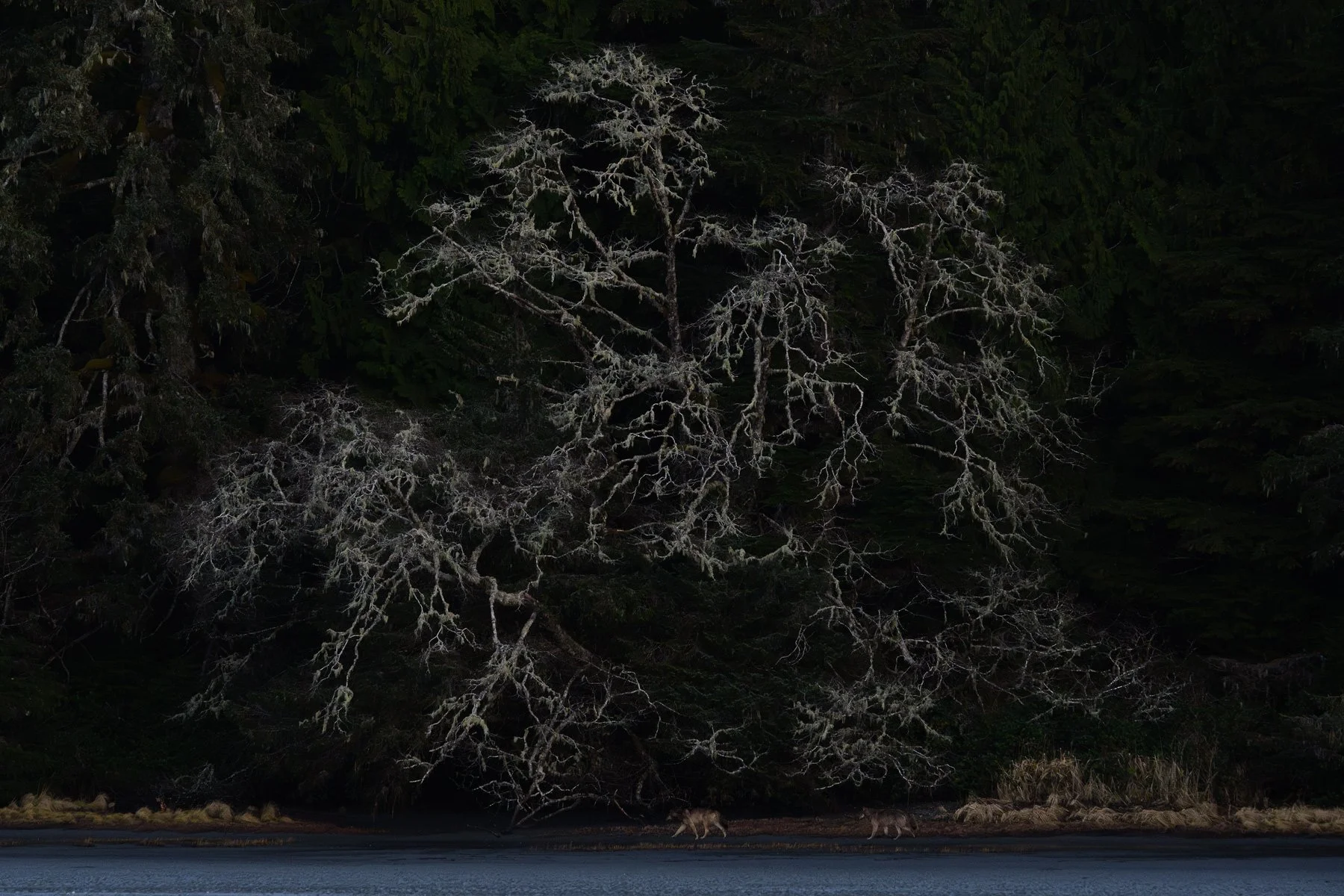Running to Assure Survival
Coastal wolves run daily marathons on their quest for food and protection of their territories
Coastal wolves, also known as sea wolves, are a unique subspecies of gray wolves found exclusively on the remote coastal islands of British Columbia. Genetically distinct from their mainland relatives, they have lighter coats, smaller bodies, and narrower skulls. Unlike most wolves, coastal wolves rely heavily on seafood, hunting along shorelines for salmon, herring, clams, mussels, otters, and even seals.
These wolves command vast territories, necessary for securing enough food and protecting their pack from rivals. The size of their home range shifts with the seasons. During the spring pup-rearing period, it can condense to roughly 100 square kilometers. Once the pups are old enough to travel, typically after three to four months, the range can expand to over 250 square kilometers. The alpha male and other pack members actively patrol their territory, easily covering over 70 kilometers per day. They’re also powerful swimmers, capable of crossing up to 13 kilometers (8 miles) of open water between islands. Unlike interior wolves, coastal wolves hunt alone or in small packs since much of their food can be foraged along the shoreline.
A large and bountiful territory provides many resources; but it also comes at a great cost.
Directional Thoughts:
How do you convey to the viewer a sense of a long journey taken by this individual wolf?
Aerial Images showing the large expanse of the territory and the wolf shown small in frame moving through it.
Incorporate the vastness of the ocean and the wolves reliance on it.
If introductory story/chapter, heavy focus on ocean & beach scenes
Wide variety of geographies (beach/ocean, rocky coast, mud flats, creeks/estuaries). Give sense wolves are moving through multiple environments
Convey depth and expanse by using diminishing perspectives (wide angle & drone)
Show wolves in constant motion / running. Limit standing or laying down images
Individuals on journey versus the pack. Sense of a lone journey
Running into nothingness, a sense for a never ending journey. Potential sequence morning, noon, and night shots over and over again as if it’s never ending.
Not only running but also swimming
Gather images of tracks in all weather conditions/seasons conveying perpetual year-round journey
Shot List:
Opener (“the hook”)
Scene Setter
Aerial
Wolves traveling along the wide expanses of the territory.
Wide Angle - Camera trap
Old growth forest & beach scenes
High & low vantage points.
Reference camera trap notes
Conflict
Portrait
Detail / Abstract / Macro
Beach tree formations with wolf print
Special Moment / Emotion
Action / Motion
Closer
Wolf skull
Potential “Money” Shots:
Wolf swimming to distant island (drone)
Wolf trotting down beach toward beached whale (drone)
Conflict between neighboring packs




















